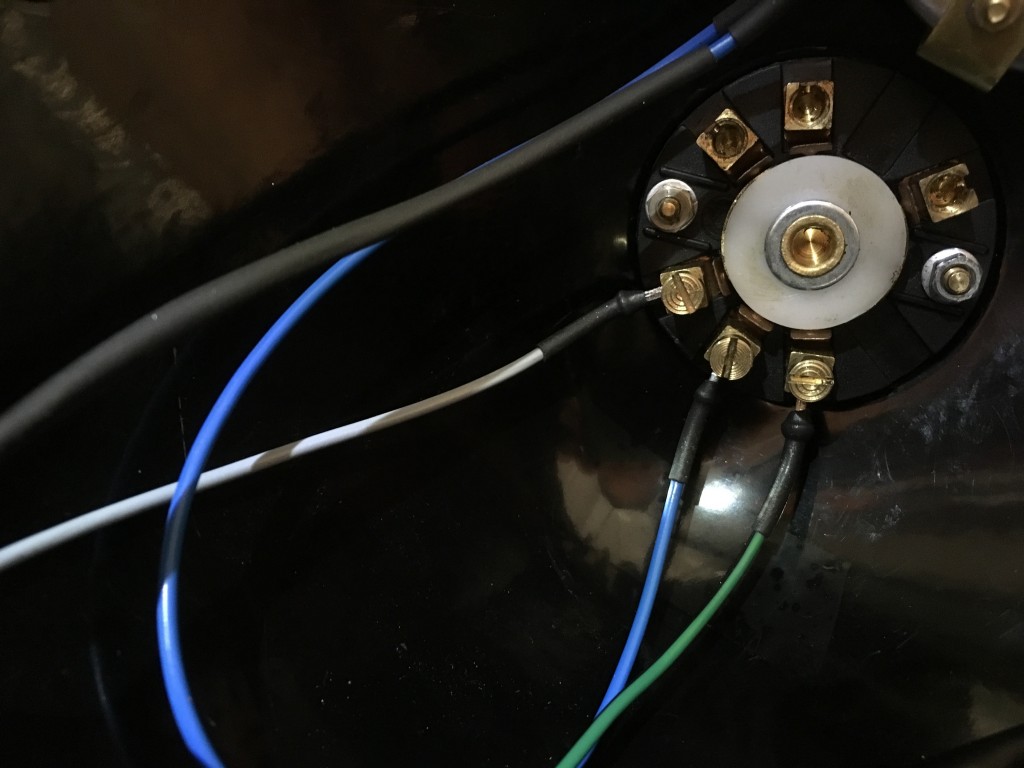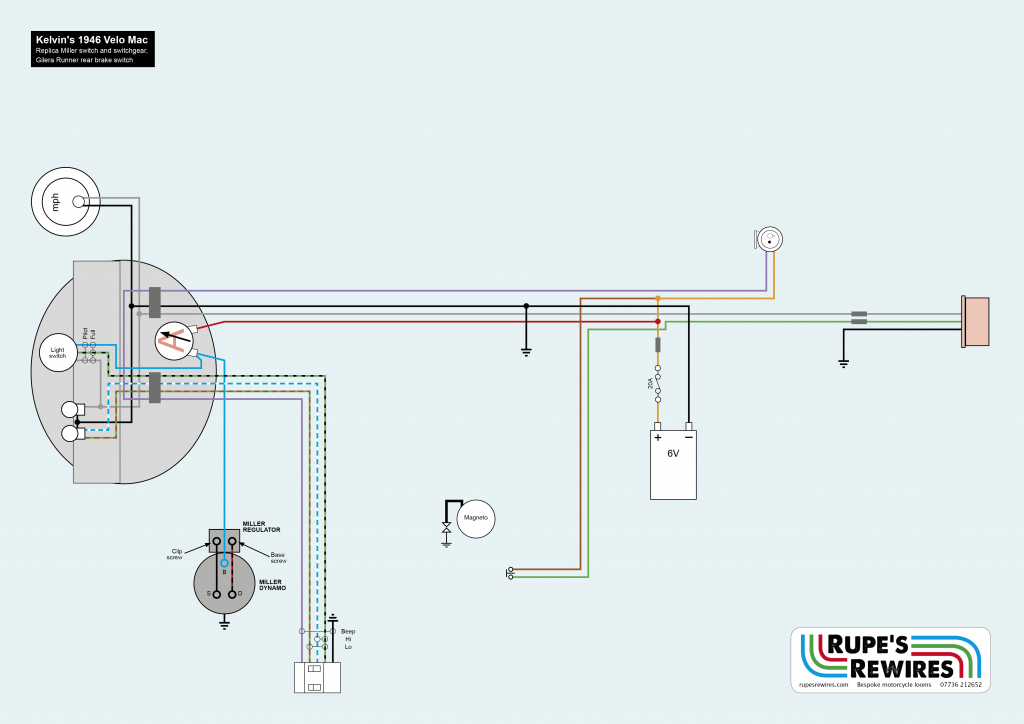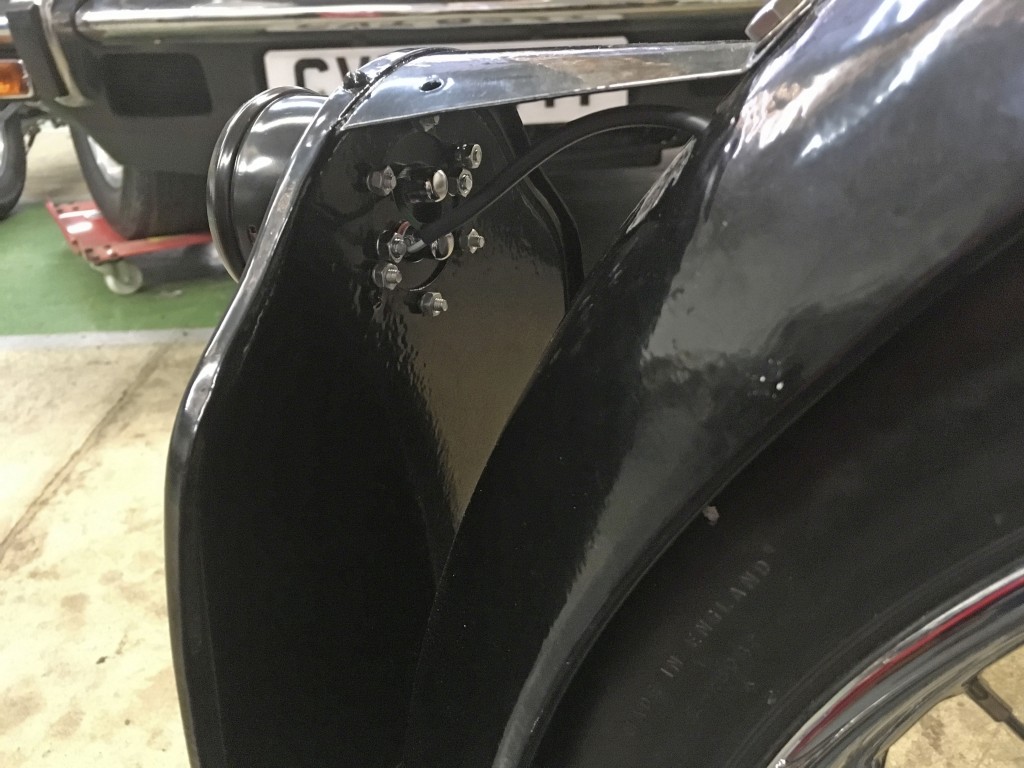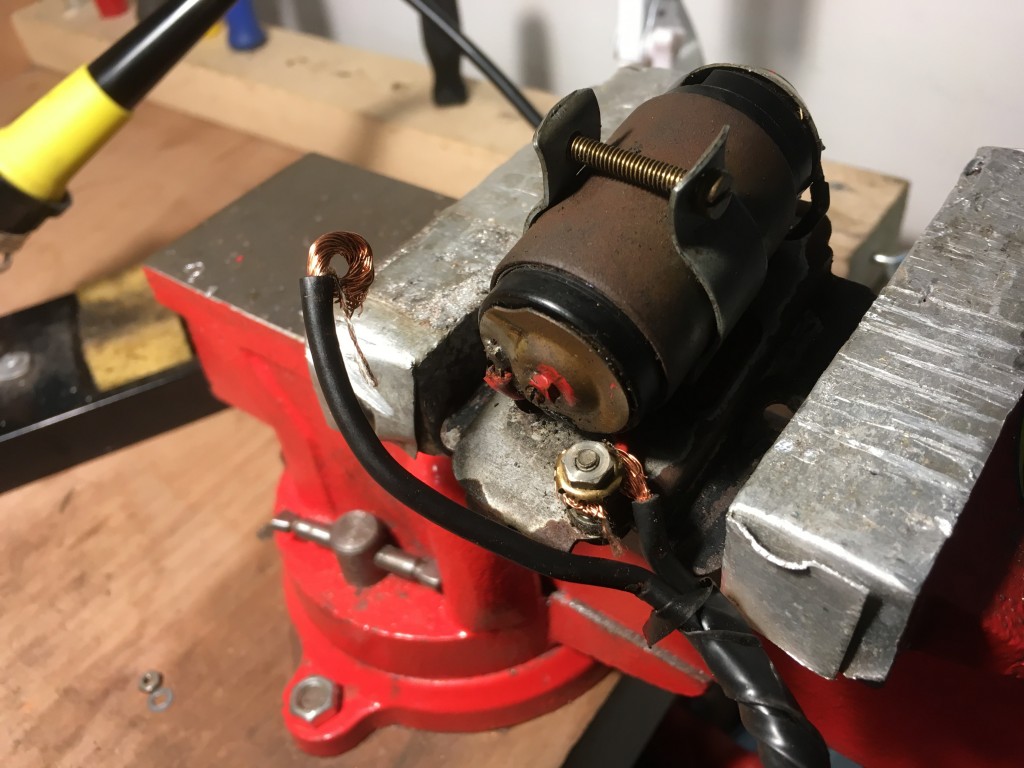
We decided the normal Brit ‘rat trap’ brake switch was gross. This Gilera scooter switch is more elegant
1946 Velocette Mac
This is the oldest bike I’ve done so far. Owner Kelvin was restoring the Velo and bought two aftermarket looms for it. Unfortunately neither one made much sense – to him or me! He decided on a custom build instead.
Old bikes like this use screw-down connectors in the headlight, and spring-loaded ones in the tail light. This isn’t great for long-term reliability because the exposed strands get corroded or chewed up (or both). To improve this we decided on using aluminium ferrules (like the things you get on the end of bicycle brake cables, but smaller). A bit of heat shrink keeps the weather out, so the only exposed part is where the ferrule enters the connector.
The standard brake for old Brits is a horrible spring-loaded thing that clamps onto the rear brake rod, and has wires trailing all over the place. Instead we screwed an aluminium paddle to the brake pedal, and mounted a Gilera scooter brake switch next to it. Much more compact and elegant. It also had the advantage of adjusting the pedal to a comfortable height.
I’ve used a few of these Gilera Runner switches on British and Italian bikes. They are nice and compact, but use an unusual 7mm metric thread.




